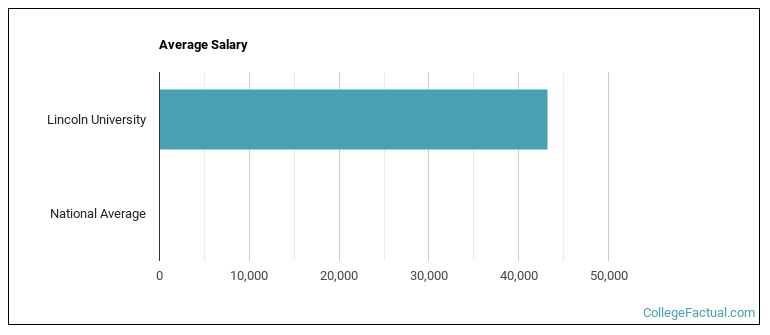 by our College Data Analytics Team
by our College Data Analytics TeamCollege Factual recognizes the best colleges and universities in its annual rankings. These rankings include categories for best overall colleges, best colleges for each major, best value schools, and much more.
Lincoln University was awarded 2 badges in the 2025 rankings. The highest ranked major at the school is general psychology.
Explore the best ranked schools for the programs you are most interested in.
Lincoln is ranked #2,025 out of 2,152 schools in the nation for overall quality on College Factual's 2025 Best Colleges list.
Lincoln also holds the #99 spot on the Best Colleges in Pennsylvania ranking.
The acceptance rate at Lincoln University is 81%. That's higher than the rate at many schools, but still low enough to be considered somewhat selective. If you want to get in, you'll need good grades and to be able to show that Lincoln is a good fit for you.
About 38% of students accepted to Lincoln submitted their SAT scores. When looking at the 25th through the 75th percentile, SAT Evidence-Based Reading and Writing scores ranged between 430 and 530. Math scores were between 410 and 510.
The student to faculty ratio is often used to estimate how much interaction there is between professors and their students at a college or university. At Lincoln University, this ratio is 13 to 1, which is on par with the national average of 15 to 1. That's not bad at all.
In addition to the student to faculty ratio, some people look at what percentage of faculty members are full-time as a sign of how much time professors will be able to spend with their students. This is because part-time teachers may not be be on campus as much as their full-time counterparts.
The full-time faculty percentage at Lincoln University is 100%. This is higher than the national average of 47%.
The freshmen retention rate of 79% tells us that most first-year, full-time students like Lincoln University enough to come back for another year. This is a fair bit higher than the national average of 68%. That's certainly something to check off in the good column about the school.
The on-time graduation rate is the percent of first-time, full-time students who get their bachelor's degree with four years. At Lincoln this rate is 30%, which is about average when compared to the national rate of 33.3%.
Find out more about the retention and graduation rates at Lincoln University.
During the 2017-2018 academic year, there were 1,895 undergraduates at Lincoln with 1,680 being full-time and 215 being part-time.
| $0-30 K | $30K-48K | $48-75 | $75-110K | $110K + |
|---|---|---|---|---|
| $14,438 | $15,394 | $16,984 | $19,553 | $22,284 |
The net price is calculated by adding tuition, room, board and other costs and subtracting financial aid.Note that the net price is typically less than the published for a school. For more information on the sticker price of Lincoln, see our tuition and fees and room and board pages.
Almost 66% of college students who graduated with the class of 2018 took out student loans, but that percentage varies from school to school. At Lincoln, approximately 81% of students took out student loans averaging $6,779 a year. That adds up to $27,116 over four years for those students.

Get more details about the location of Lincoln University.

Contact details for Lincoln are given below.
| Contact Details | |
|---|---|
| Address: | 1570 Baltimore Pike, Lincoln University, PA 19352-0999 |
| Phone: | 484-365-8000 |
| Website: | www.lincoln.edu/ |
| Most Popular Majors | Bachelor’s Degrees | Average Salary of Graduates |
|---|---|---|
| Human Services | 75 | $34,374 |
| Health Sciences & Services | 60 | $32,664 |
| Criminal Justice & Corrections | 45 | $28,847 |
| Radio, Television & Digital Communication | 37 | $23,309 |
| Business Administration & Management | 30 | $28,984 |
| Educational Administration | 27 | NA |
| General Psychology | 24 | $33,699 |
| General Biology | 22 | NA |
| Computer Information Systems | 16 | $29,087 |
| Political Science & Government | 16 | $26,037 |
If you’re considering Lincoln University, here are some more schools you may be interested in knowing more about.
Curious on how these schools stack up against Lincoln? Pit them head to head with College Combat, our free interactive tool that lets you compare college on the features that matter most to you!
Footnotes
*The racial-ethnic minorities count is calculated by taking the total number of students and subtracting white students, international students, and students whose race/ethnicity was unknown. This number is then divided by the total number of students at the school to obtain the racial-ethnic minorities percentage.
References
More about our data sources and methodologies.